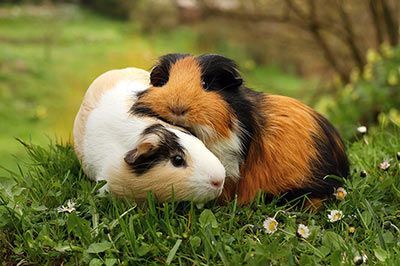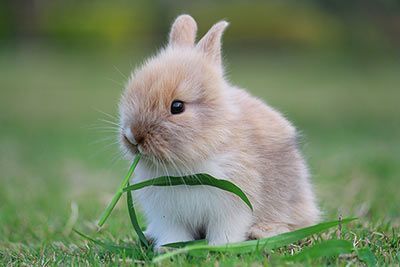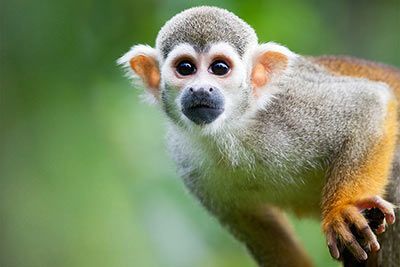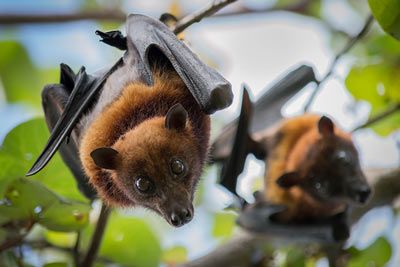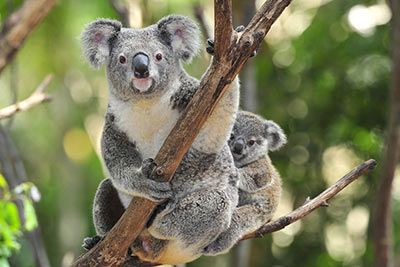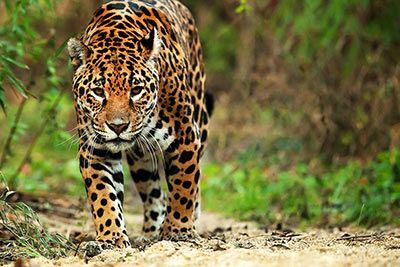Squirrel Monkey
Squirrel Monkey Facts
| Size | 10-14 inches (26-36 cm) |
| Speed | Up to 22 mph (35 km/h) |
| Weight | 26-38 ounces (750-1,100 grams) |
| Lifespan | 15-20 years |
| Food | Fruit, leaves, little animals |
| Predators | Birds of prey, snakes |
| Habitat | South America |
| Order | Primates |
| Family | Cebidae |
| Scientific name | Saimiri |
| Characteristics | Face resembles a skull |
Main Characteristics
Squirrel monkeys are small primates that live in forests in Central and South America. They are closely related to the capuchin monkeys. Their most striking features are the long tail and the face, which resembles a skull. They move and jump very skillfully.
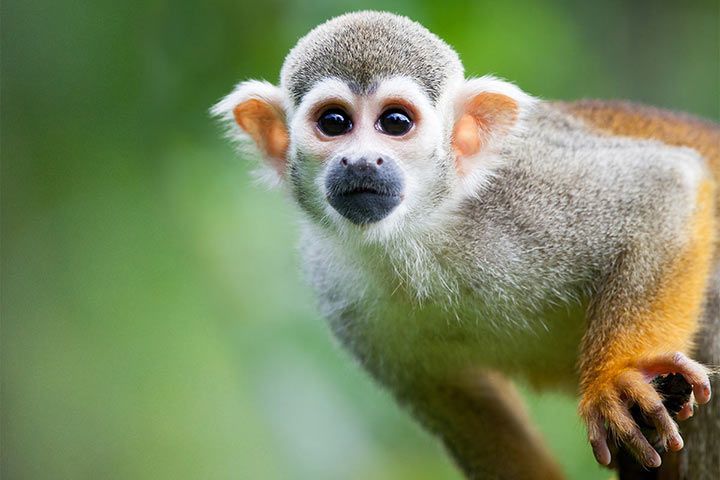
Distribution and Habitat
Squirrel monkeys live in Central and South America: in Colombia, Bolivia, Brazil, Ecuador, Peru, Guyana, Suriname, French Guiana, Costa Rica and Panama. As a habitat, they prefer tropical forests that are characterized by high temperatures and high humidity.
Life Style
Squirrel monkeys are diurnal. They spend most of their time in trees. While up in the trees, they run on all fours and use their tail to balance on branches. They are very social and form groups of 12-100 animals. The groups are ruled by females.
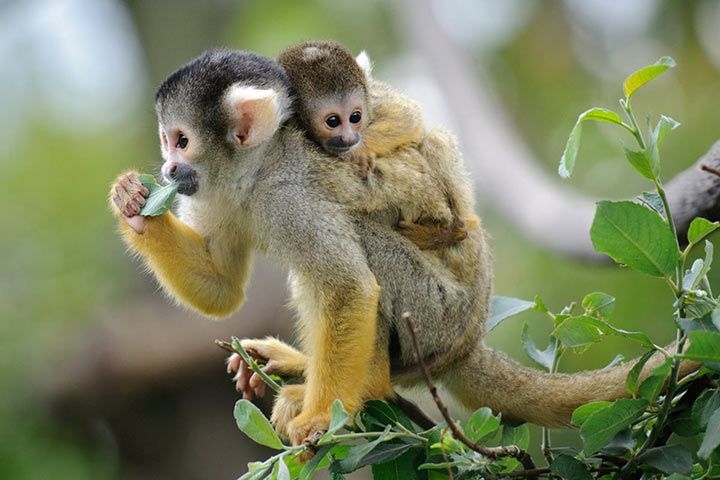
Anatomy and Appearance
Size and Weight
Squirrel monkeys have a body length of 10-14 inches (26-36 cm). The males weigh 26-38 ounces (750-1,100 grams), the females only 17-38 ounces (500-750 grams).
Face
Squirrel monkeys have black eyes, a white face and a dark mouth. At first glance, its face looks like a skull - which is why the animal was named „Totenkopfäffchen“ ("Totenkopf" = skull, "Äffchen" = little monkey) in German.
Tail
Squirrel monkeys have a long tail that helps them maintain balance. It grows to 35-42 cm long, making it even longer than the animal itself.
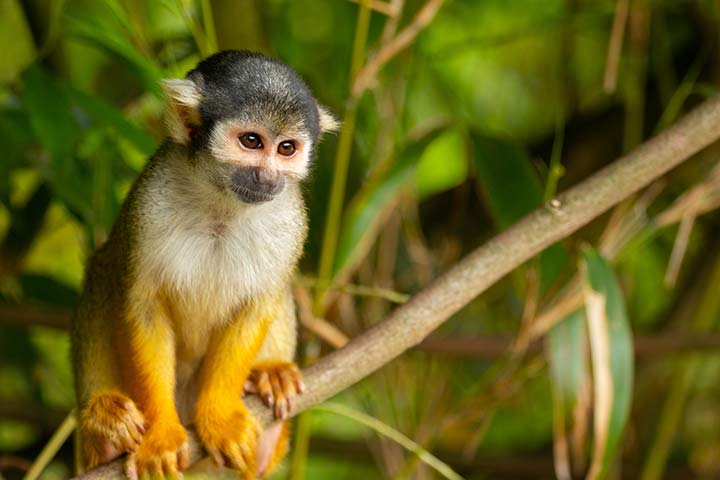
Diet
Squirrel monkeys are omnivores. They feed primarily on insects and fruits. Occasionally, they also eat seeds, leaves, flowers, buds, nuts and eggs.
Behavior
Climbing
Squirrel monkeys are very good at climbing, even though they don't have a prehensile tail. The monkeys can't use their tails to grab onto things like branches as the chameleon can. Still, their long tail is very useful for them. It is like a rudder and helps them keep their balance.
Scent Marks
Just imagine the following situation: You fixed a date to meet a friend at a certain place. He didn't show up and now you want to leave him a message that you were there. If you were a squirrel monkey, you would pee on your hands and feet and then walk around on all fours at the meeting point - so your friend can sniff out that you were there. The scent marks are a form of communication. Luckily, we have cellphones ...!
Are Squirrel Monkeys Aggressive?
No, squirrel monkeys are not dangerous. On the contrary. They are very peaceful. Many other animals engage in territorial wars. However, the monkeys prefer to avoid each other when there are arguments. This is very smart, because why spend so much energy when there is enough space for everyone!
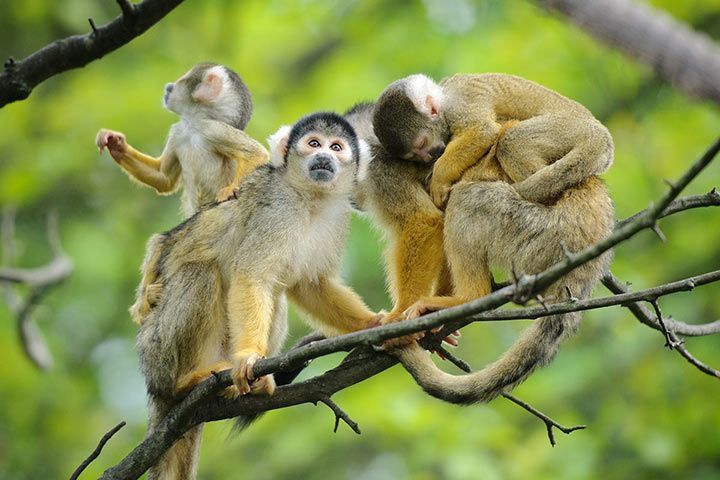
Importance for the Ecosystem
Squirrel monkeys have a crucial role in maintaining the balance of their ecosystem. They feed on insects and help maintain a stable population. They also disperse the seeds of fruits through their droppings and plant new trees.
Life Expectancy
Squirrel monkeys live 15-20 years in the wild.
Enemies and Threats
Natural Enemies
Squirrel monkeys' natural enemies are birds of prey and snakes.
Human Impact
Squirrel monkeys aren't threatened with extinction yet. However, their habitat is being destroyed at an alarming rate, posing a significant threat to their survival. Two species are already considered endangered: the Central American squirrel monkey and the dusky squirrel monkey. Another threat is that the animals are often caught by poachers and sold as pets.
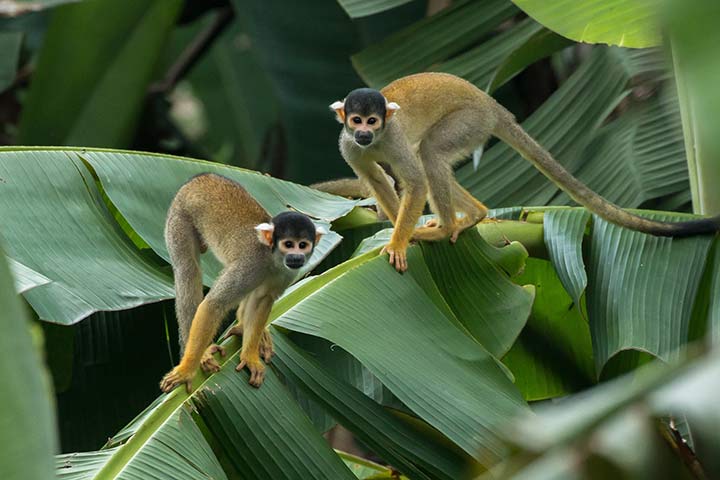
Squirrel Monkeys as Pets
The longing for a squirrel monkey similar to Mr. Nilsson from Pippi Longstocking is immense - and comprehensible. These creatures are amusing and incredibly adorable. Consequently, they are captured and sold as pets. Nevertheless, properly caring for animals in a way that suits their natural habitat is very challenging and frequently underestimated.
Requirements
In the USA, keeping squirrel monkeys is allowed in 25 states. In Germany, numerous regulations must be met beforehand. For example, at least ten animals are required for species-appropriate keeping, so they can express their social behavior. They must be registered and proof of expertise must be provided. In addition, a specialist evaluates, if all regulations are met.
Costs
Squirrel monkeys are expensive. If you want to buy one, you have to pay between 2,000 and 4,000 dollars for it. The cost for ten animals is 20,000 to 40,000 dollars.
What Are They Like as a Pet?
Squirrel monkeys don't make good pets. Here is why: They are wild animals, they are loud, break things, throw feces and spread their urine on the floor because they pee on their hands.
Reproduction
After squirrel monkeys mate, it takes 150-170 days for a single baby to be born. From the first day of birth it rides on its mother's back. The young animal starts venturing out on its own after approximately two months, discovering its surroundings independently. By the time it reaches ten months, it no longer relies on its mother.
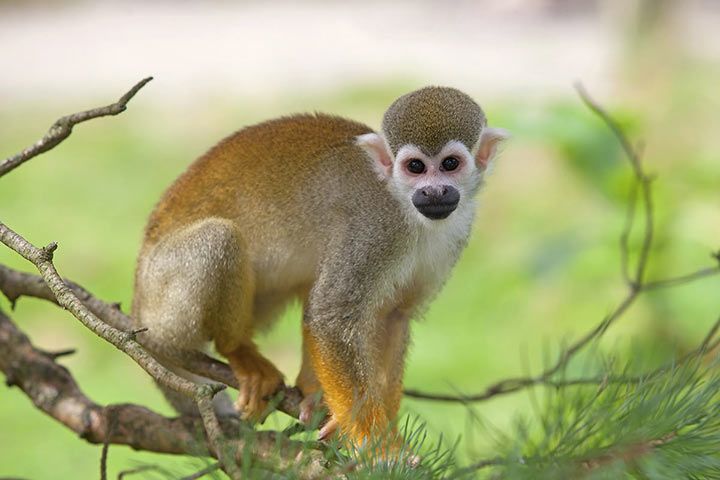
Fun Facts
Pippi Longstocking's Monkey
Pippi Longstocking has a little monkey. In Astrid Lindgren's children's books it is a vervet monkey, in the movies Mr Nilsson is a squirrel monkey.
The Squirrel Monkey Is Related To:
- Capuchin Monkeys
Animals in the Same Biome:
Related Articles:
Recommended Videos:













 Rainforest Animals
Rainforest Animals
